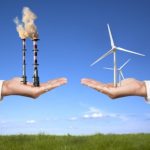 Income inequality and carbon dioxide emissions in rich countries like the United States, Denmark, and Canada are closely linked, but a new study from Drexel University shows that this connection can change over time and varies by type of emission. These insights could help nations reduce emissions and tackle income inequality together.
Income inequality and carbon dioxide emissions in rich countries like the United States, Denmark, and Canada are closely linked, but a new study from Drexel University shows that this connection can change over time and varies by type of emission. These insights could help nations reduce emissions and tackle income inequality together.
The study uses a multidimensional emissions profile (MEP) framework to analyze how the relationship between income inequality and emissions differs by category of human activity. It examines data from 34 wealthy nations from 2004 to 2015 and focuses on four types of emissions:
- Emissions from domestic supply chain activities
- Emissions from exports
- Direct emissions from end-user activities
- Emissions from imports
These categories are important for climate change efforts and are linked through supply chains both at home and globally. The MEP framework helps identify which emission categories can be reduced through policies that also cut inequality, and which might increase as a result of these policies.
A strong link
The study uses statistical models to explore the link between carbon emissions and the income share of the top 10% of earners. It found that from 2009 to 2011, after the Great Recession, the income share of the top 10% was negatively related to direct end-user emissions, but from 2011 to 2015, it was positively related to emissions from exports.
“I believe that direct end-user emissions and export emissions are linked to the top 10% income share through different mechanisms,” the author explains.
Previous research outlines three mechanisms: the political economy, consumption patterns (the Veblen effect), and households’ propensity to emit. The political economy mechanism suggests that the wealthy can undermine carbon regulations for production and export industries, which was more evident from 2011 to 2015.
The Veblen effect and the propensity to emit mechanisms relate more to consumption. The Veblen effect describes how inequality drives competitive consumption, while the propensity to emit refers to how different income levels spend additional income and produce emissions. These mechanisms were significant in the negative relationship between income inequality and direct end-user emissions from 2009 to 2011, influenced by the Great Recession.
The study suggests that reducing income concentration at the top could lower export-related emissions but might increase direct end-user emissions, especially during and after recessions.
“To address climate change and economic inequality, we need policies that reduce emissions and inequality together,” the author concludes.
They suggest that policies aimed at reducing inequality, like a global tax on billionaires, should be paired with measures that help lower-income populations without increasing their carbon emissions.